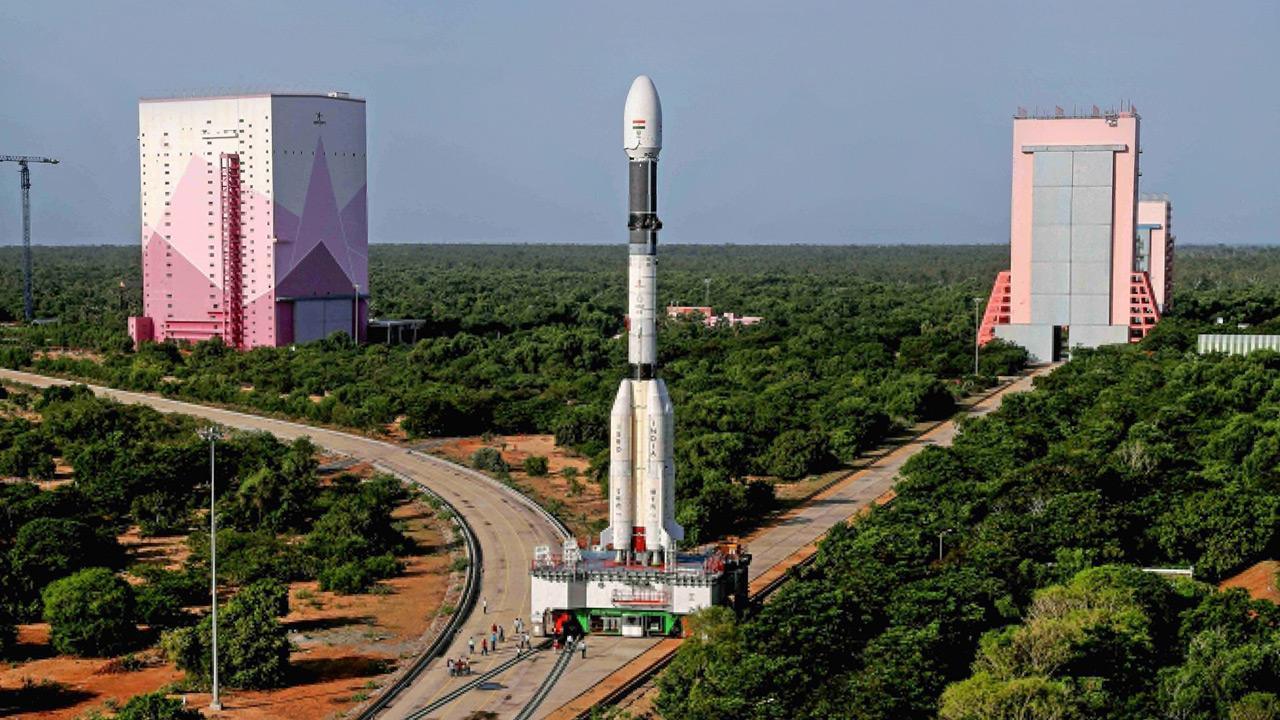The 51.70-metre tall rocket GSLV-F10/EOS-03 successfully lifted off from the second launch pad at the spaceport as planned at 05.43 hrs soon after the 26-hour countdown concluded

India's Geosynchronous Satellite Launch Vehicle (GSLV-F10) at the launch pad ahead of its launch, in Sriharikota. Pic/PTI
Indian Space Research Organisation's second mission of the year to place an earth observation satellite by a GSLV rocket faced a setback as the mission could not be accomplished fully due to performance anomaly in the cryogenic stage of the rocket, the space agency said on Thursday.
ADVERTISEMENT
The 51.70-metre tall rocket GSLV-F10/EOS-03 successfully lifted off from the second launch pad at the spaceport as planned at 05.43 hrs soon after the 26-hour countdown concluded. Ahead of the lift-off, the Launch Authorisation Board cleared the decks for a normal lift-off as planned. The performance of the rocket in the first and second stages of the rocket was normal, scientists at the Mission Control Centre said.
However, minutes later the scientists were seen in discussion and it was announced in the Mission Control Centre by the Range Operations Director "mission could not be accomplished fully due to performance anomaly". "Performance anomaly observed in the cryogenic stage. The mission could not be accomplished fully," the range operations director announced in the Mission Control Centre.
GSLV-F10 launch took place today at 0543 Hrs IST as scheduled. Performance of first and second stages was normal. However, Cryogenic Upper Stage ignition did not happen due to technical anomaly. The mission couldn't be accomplished as intended.
— ISRO (@isro) August 12, 2021
Later, ISRO Chairman K Sivan said, "(The mission) could not be fully accomplished mainly because there is a technical anomaly observed in the cryogenic stage. This I wanted to tell to all my friends." After the countdown commenced, scientists were engaged in the filling of propellants for the four-stage rocket at the Satish Dhawan Space Centre, Sriharikota about 100 kms from Chennai.
The objective of Thursday's mission was to provide near real-time imaging of large area regions at frequent intervals, for quick monitoring of natural disasters, episodic events and obtain spectral signatures for agriculture, forestry, water bodies as well as for disaster warning, cyclone monitoring, cloud burst and thunderstorm monitoring. Before today's launch, ISRO had launched Brazil's earth observation satellite Amazonia-1 and 18 co-passenger satellites in February this year. Thursday's rocket launch was also planned to be held in April or May however, the outbreak pushed the scientists to resume it in August.
This story has been sourced from a third party syndicated feed, agencies. Mid-day accepts no responsibility or liability for its dependability, trustworthiness, reliability and data of the text. Mid-day management/mid-day.com reserves the sole right to alter, delete or remove (without notice) the content in its absolute discretion for any reason whatsoever
 Subscribe today by clicking the link and stay updated with the latest news!" Click here!
Subscribe today by clicking the link and stay updated with the latest news!" Click here!






